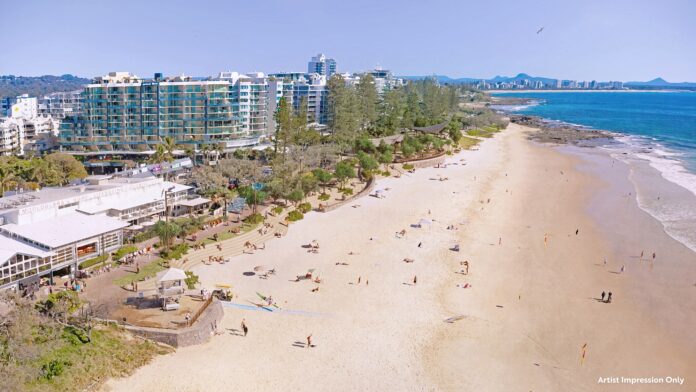A coastal systems expert has backed a proposed seawall at Mooloolaba, after the idea was panned by a local MP and community groups.
University of the Sunshine Coast geographer Javier Leon said plans to replace a 290m section of a 50-year-old vertical rock wall with a tiered structure appeared to be a “feasible” solution to defend the built-up stretch of coastline.
“Well-designed seawalls are effective at protecting infrastructure behind it,” he said.
“The terraced design appears to be good at integrating beach with esplanade and it also appears to be a good design to dissipate wave energy, as opposed to reflecting it.”
Dr Leon said that he prefers nature-based coastal protection, like restored sand dunes, and added that seawalls can have indirect issues like down-drift erosion.
But he said Sunshine Coast Council’s idea was sound.
“A seawall, plus adequate sand nourishment, is a feasible combination to maintain the beach and defend new development,” he said.
Do you have an opinion to share? Submit a Letter to the Editor at Sunshine Coast News via news@sunshinecoastnews.com.au. You must include your name and suburb.
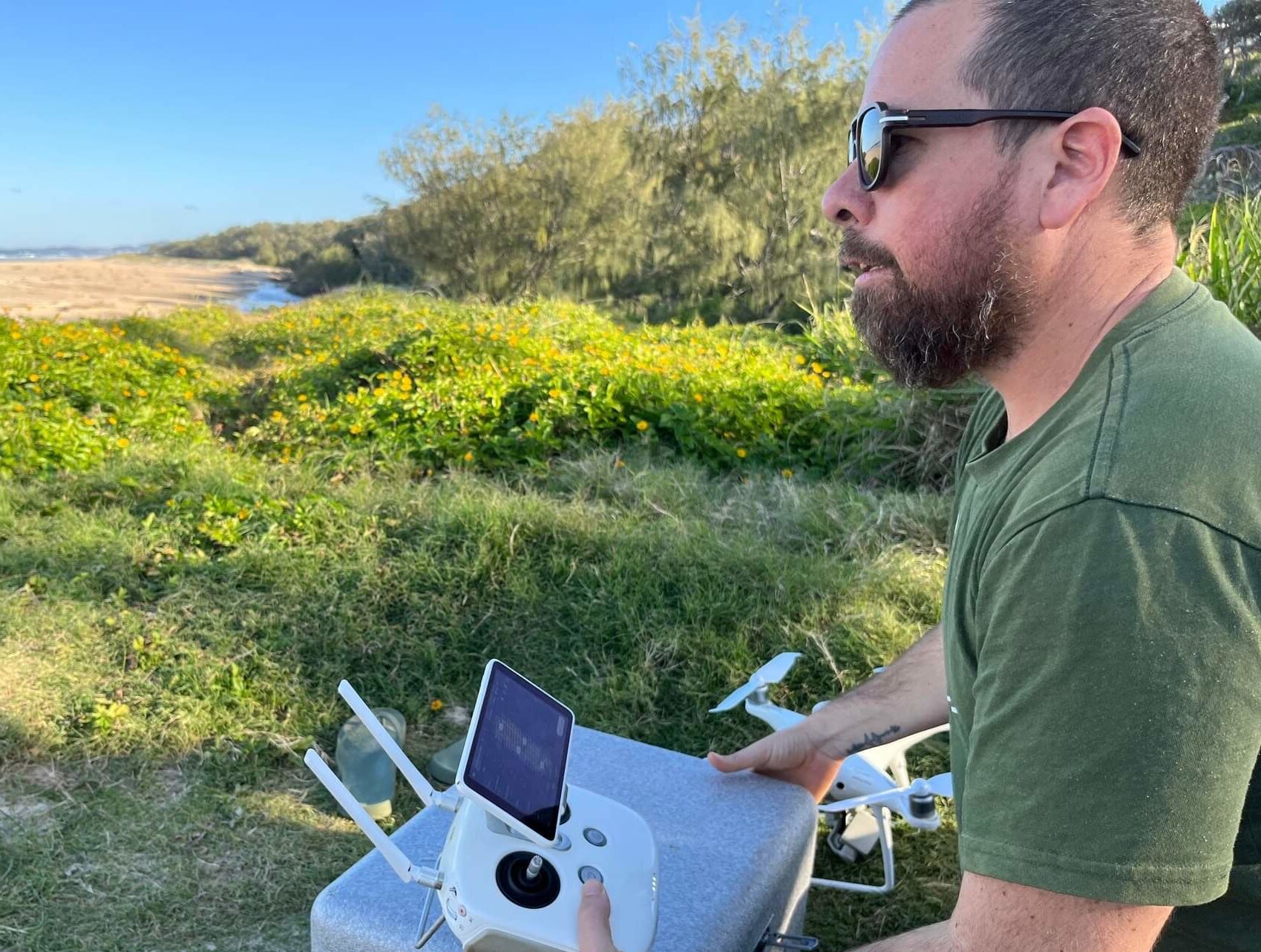
The proposed seawall is part the Mooloolaba Foreshore Revitalisation Project, which includes new parklands and amenities, and changed car parking.
Member for Maroochydore Fiona Simpson and the Mooloolaba Business Community Alliance have voiced their concerns about the plans.
They are worried that much of the beach will be lost to the seawall, and that the construction time and the removal of beachside car parks will hurt the local economy. They also cited a lack of community consultation.
“It is important that iconic Mooloolaba Beach is not wrecked with an unsightly concrete structure,” Ms Simpson said.
“There must be a better plan that takes the environment and community into account, without this negative impact.”
She said “there are grave concerns” about the seawall extending into the beach area and the works will “interfere with beach access”.
“Until the environmental questions are addressed, let alone the economic impacts, this should be put on hold, so only the right design, which takes account of all issues, is properly considered,” she said.
The Mooloolaba Business Community Alliance, which includes the Mooloolaba Chamber of Commerce and the Beach Matters Group, was also aggrieved by the plans.
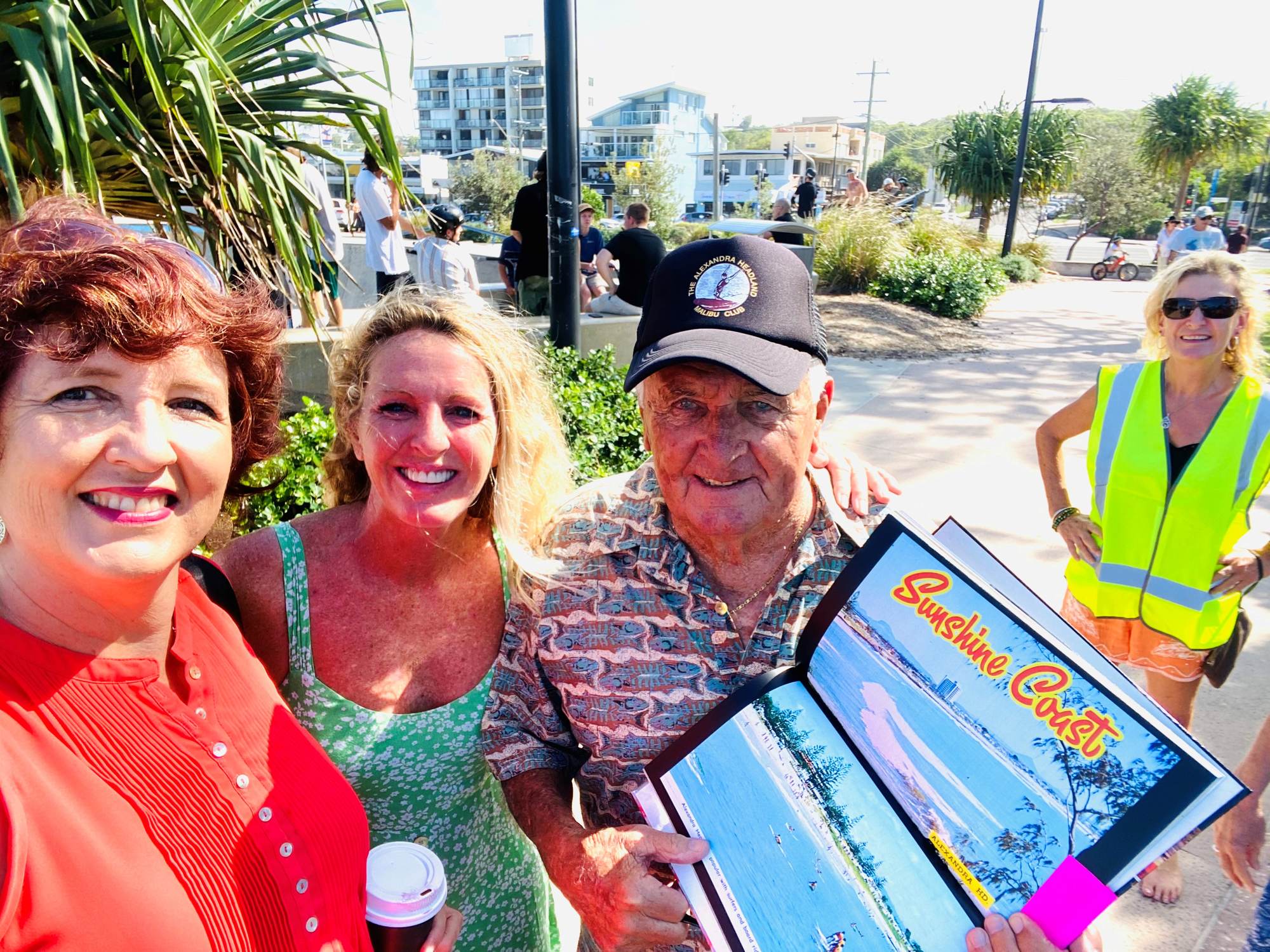
Alliance spokesperson and Beach Matters Group president Rachel Bermingham said there were other options, other than a terraced seawall.
“If council’s intention of protecting infrastructure was authentic, they would leave the beach and dunes in their natural healthy state to give us one line of natural defence and put a seawall under the parkland as a second line of defence, (or) a third option of putting in an artificial reef to reduce wave energy,” she said.
She was worried about the potential for exposed concrete on the beach, and the costs associated with covering it.
“Ratepayers will have to fork out for sand nourishment activities,” she said.
A council spokesperson said the seawall would be terraced with wide steps – doubling as beachside seating – and accompanied by plants and shade trees.
“A range of expert and independent assessments confirmed that the existing seawall was not of a suitable height, design or condition to withstand future major storm events,” they said.
“The replacement seawall has been modelled and designed by a qualified coastal engineer and structural engineer as part of the project’s design team.”
They said the design was reviewed by an international coastal engineering expert and it was approved by state government.
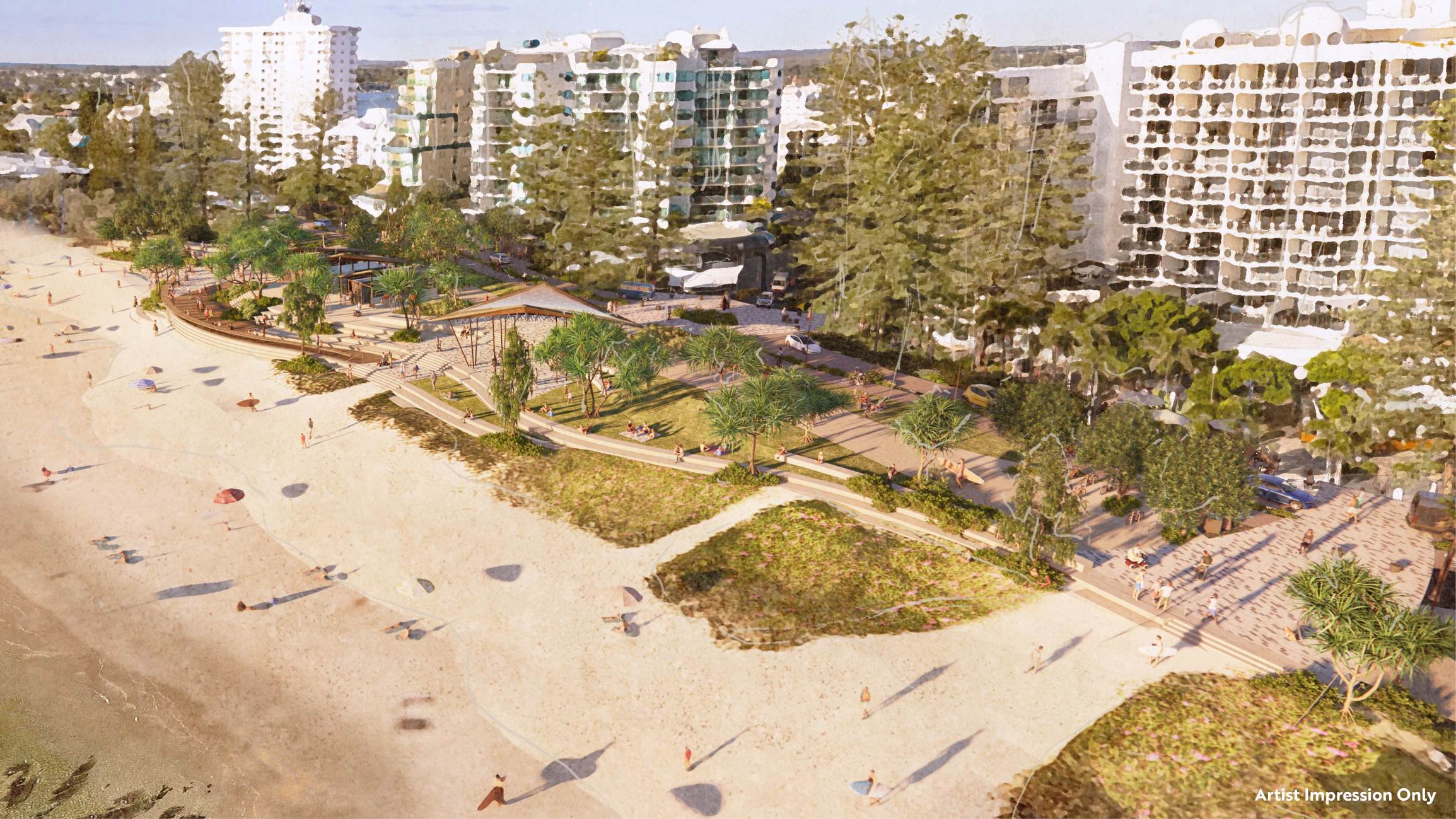
They said a range of information was used during the design process, including data collected from tides, waves, sand levels, beach and parkland usage and accessibility.
“The foundations (of the seawall) will be buried deep under the sand to ensure it provides adequate protection for Mooloolaba into the future,” the spokesperson said.
“The seawall is considered our last line of defence and the alignment of it has been carefully considered to protect our community coastal infrastructure.
“The seawall is expected to have a negligible impact on sand levels under normal weather conditions.”
But they said that in the case of extreme weather events “some sand loss would be expected, followed by beach re-nourishment”.
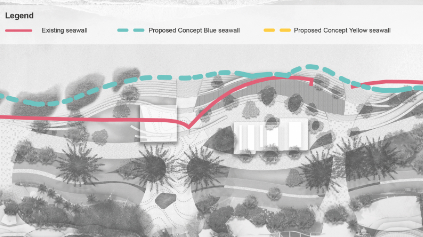
Council says on its website that the furthest extent of the seawall would be about 23m away from the average highest astronomical tide.
The spokesperson said a terraced seawall would provide enhanced beach access and greater wave energy dissipation.
“Building another vertical seawall in the same location would mean a physical and visual barrier would exist between the beach and the foreshore, complete with a one-metre-high fence and railings,” they said.
“It would not allow for seating areas or landscaping opportunities (including shade trees and plants for greening the foreshore) or fulfil the accessibility expectations of our community or council.
“The terraced steps/seats will be the perfect place to watch the waves or attend major Mooloolaba events such as New Year’s Eve celebrations, festivals, the ANZAC Day service and beach sports like volleyball and rugby.
“The seawall will be further enhanced by attractive landscaping, including plants and shade trees, along with revegetation of the adjacent dunal areas.”
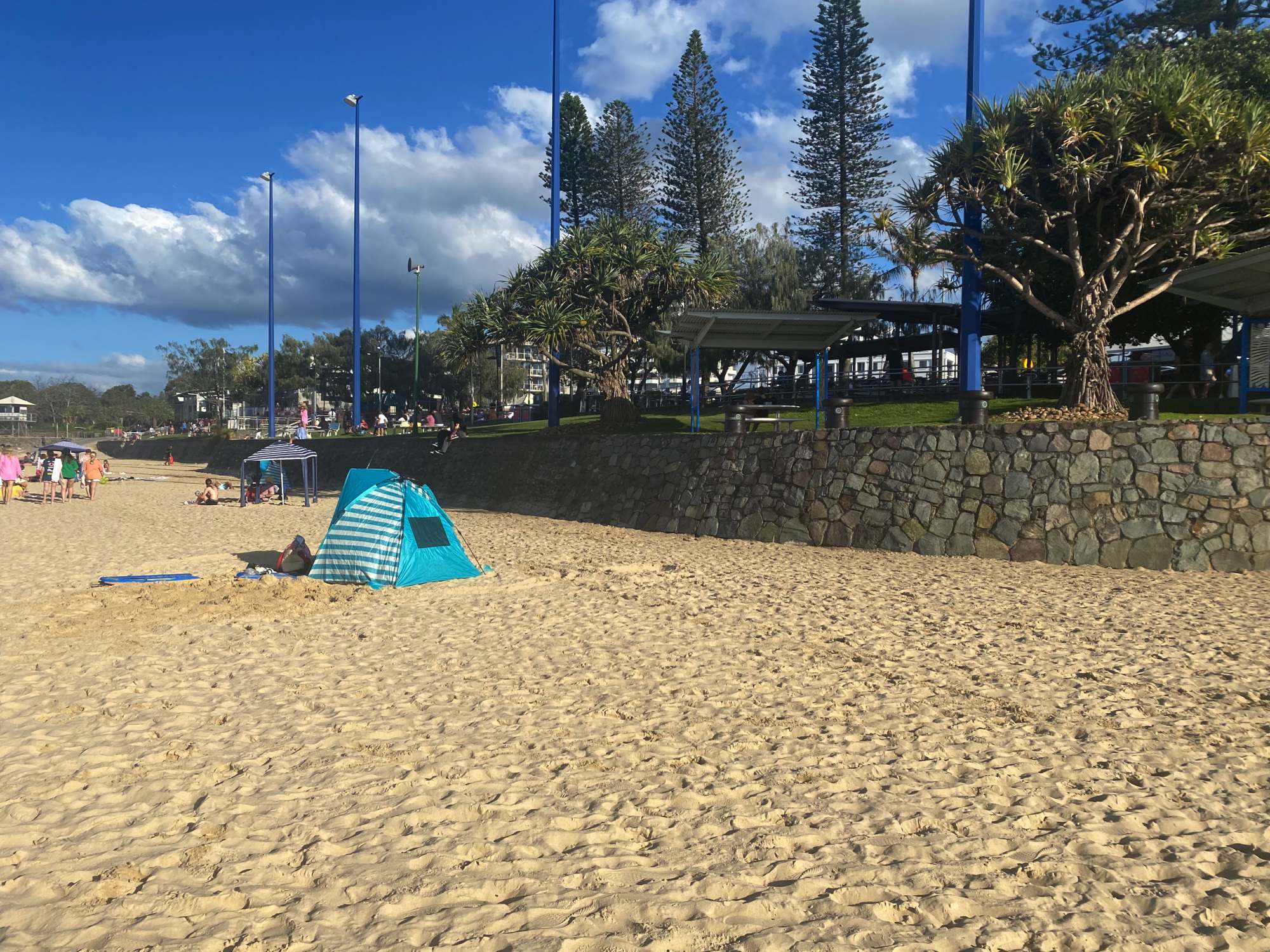
The parkland will also include a shaded event and meeting space, open grassed areas, viewing deck, new beach showers and toilets (to replace the ageing Loo with a View amenities), landscaping, art work and a new section of coastal pathway.
The spokesperson said access to the beach and businesses would remain during construction, and patrolled areas for swimmers would be provided “in a nearby location”.
“Council is committed to working with the Mooloolaba business community to develop a program of activities and initiatives pre, during and post construction,” they said.
They said council was in the construction tender phase and would work with the successful contractor to guide the project’s timing.
They also said extensive public engagement had taken place and council had met with a range of stakeholders, including community and businesses groups, and that 75 per cent of survey respondents agreed on the parkland and seawall design, which was adopted by council in January.
“The community stated a clear preference for improved inclusion and accessibility,” they said.
“The new seawall will incorporate a new easy-access ramp to the beach for everyone that is disability compliant, the first of its kind on the Sunshine Coast.”
The project will be funded by the federal government ($7.95m) and council ($8.05m).
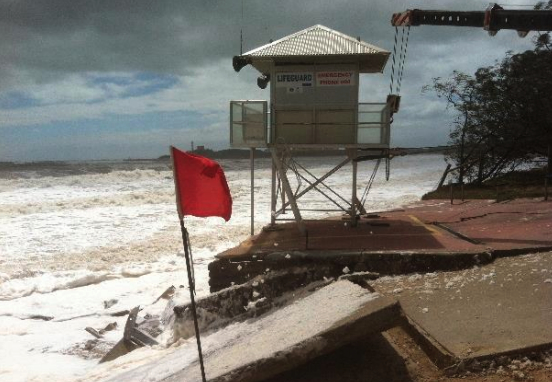
Meanwhile, Dr Leon, who was consulted by council on the proposed seawall, said there should be less development on the Sunshine Coast coastline.
“The more development along the dynamic coastal area, the more issues we have with coastal management,” he said.
“We have been observing rapid changes the last few decades, due to climate change, and there is evidence that coastal hazards will increase in coming decades.
“We need to consider this in our coastal management plans and decisions and try and reduce risks, by minimising exposure, that is development on coastal areas.
“We should be managing our coasts using nature-based solutions and when/if hard infrastructure such as seawalls, revetments or groynes are necessary, we should try to minimise their footprint and impacts.”
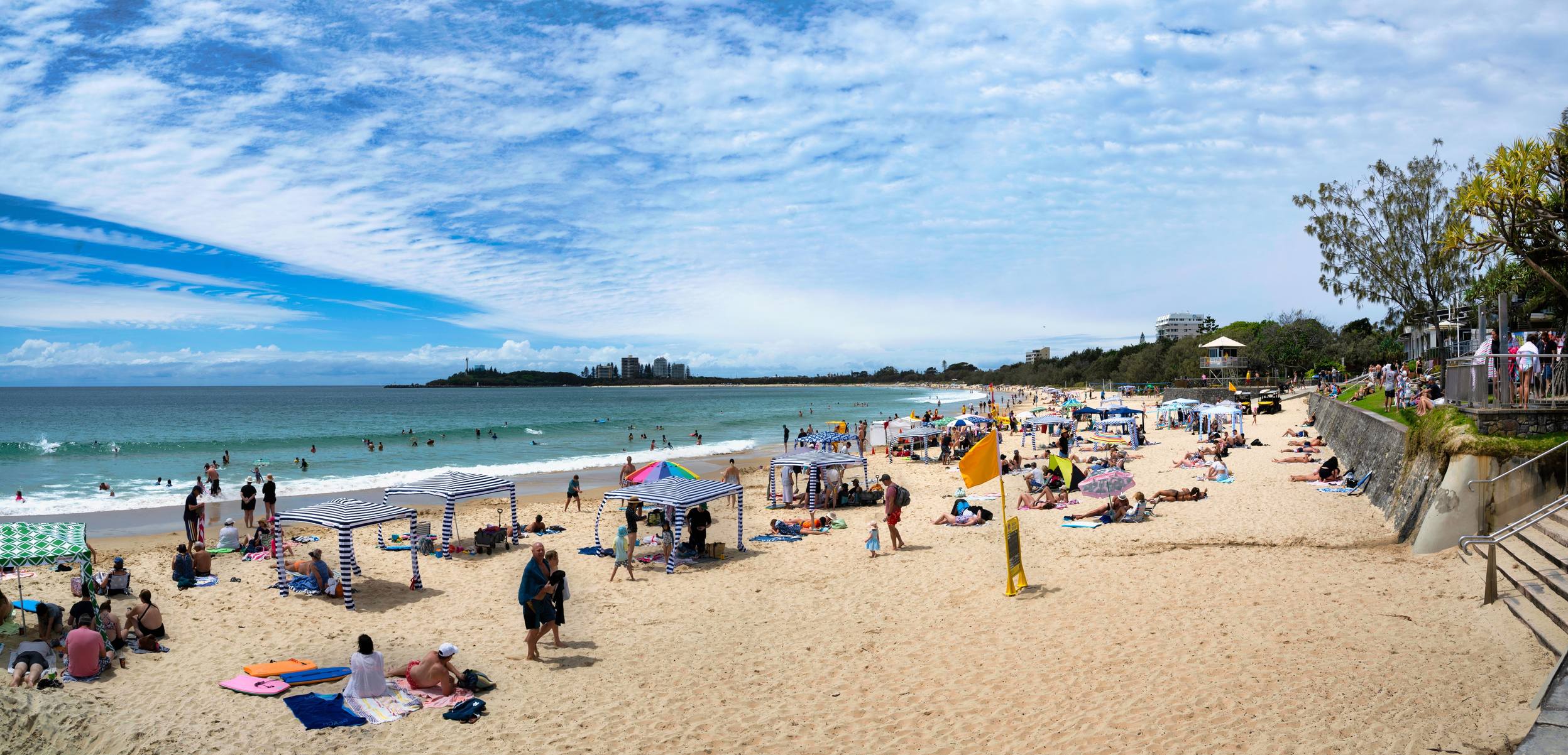
He said other coastal management options for Mooloolaba “such as restored dunes” could be good for flooding and erosion mitigation.
“But they might also block views and transit or take longer to implement,” he said.


